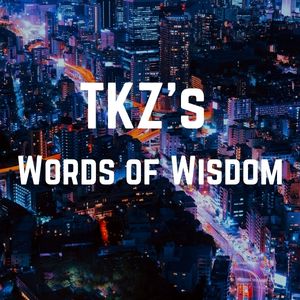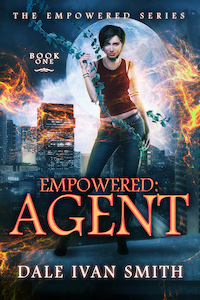A great mystery or thriller series can have lasting popularity. But how do you create a one that will go the distance with readers?
Today’s Words of Wisdom has you covered. James Scott Bell provides five qualities in the best series characters. John Gilstrap discusses planting fodder for a future series in that first book even as each book can stand on its own. Finally, Sue Coletta assembles advice from several other Kill Zone authors on building series.
All three posts are well worth reading in full, and as always are date-linked at the end of their respect excerpts.

I see five qualities in the best series characters. If you can pack these in from the start, your task is half done. Here they are:
- A point of uniqueness, a quirk or style that sets them apart from everybody else
What is unique about Sherlock Holmes? He’s moody and excitable. Among the very staid English, that was different.
Jack Reacher? Come on. The guy doesn’t own a phone or clothes. He travels around with only a toothbrush. Funny how every place he goes he runs into massive trouble and very bad people.
- A skill at which they are really, really good
Katniss Everdeen is killer with the bow and arrow.
Harry Potter is one of the great wizards (though he has a lot to learn).
- A bit of the rebel
The series hero should rub up against authority, even if it’s in a quiet way, like Miss Marple muttering “Oh, dear” at the local constabulary. Hercule Poirot is a needle in the side of Inspector Japp.
- A vulnerable spot or character flaw
Robert E. Howard’s Conan the Cimmerian has a vicious temper that sometimes gets the better of him.
Sherlock Holmes has a drug habit.
Stephanie Plum keeps bouncing between two lovers, who complicate her life.
- A likable quality
Raymond Chandler’s Philip Marlowe has some of the greatest quips in the history of crime fiction. We like them because Marlowe is also vulnerable—to getting beat up, drugged, or otherwise manhandled by forces larger than himself (like Moose Malloy).
Wit is one of the great likability factors.
Another is caring for others besides oneself. Stephanie Plum has a crazy family to care for, not to mention her sometime partner Lula.
James Scott Bell—August 13, 2017
A series is more episodic.
My Jonathan Grave thriller series is not a continuing story, but is rather a collection of stand-alone stories that involve recurring main characters. Jonathan Grave’s character arc over the course of eleven books now is very long and slow, while the arcs of the characters he interacts with are completely developed within each book. There are Easter eggs for readers who have read all the books in order, but I am careful to make each episode as fulfilling for a reader who picks up Book Ten as their first exposure to the series as it is for a reader who’s been with me from the beginning.
Writers like the always-fabulous Donna Andrews write series that are driven as much by place as by characters. The people in her fictional town of Caerphilly, Virginia, are a hoot, even though an extraordinary number of people are murdered there.
Jeffery Deaver’s Lincoln Rhyme solves a new crime by the end of every book. While Rhyme’s medical progress as a quadriplegic is continually evolving from book to book, as is his relationship with Amelia, a new reader is well-grounded in any story, without benefit of having read the previous ones.
A stand-alone, well, stands alone.
When I finished Nathan’s Run, the story was over. There was no place I could feasibly have taken Nathan or the other characters to tell a new story. That was the case with each of the following three novels and, of course, with my nonfiction book. I think the primary characteristic of a stand-alone is that “The End” means the end. The character and story arcs have all been driven to ground.
A series takes planning.
When I was writing No Mercy, the first book in the Grave series, I knew in my heart that I had finally landed on a character who could support a series. What I didn’t know was whether or not a publisher would buy it, and if they did, whether they’d support the idea of developing the one story into many. Still, I made a conscious effort to plant as much fodder as I could for potential use in future stories. For example:
- Jonathan is a former Delta Force operator, leaving the potential for stories dealing with his days in the Unit.
- His hostage rescue activities are a covert part of a legitimate private investigation firm that does work for some of the largest corporate names in the world. This sets up potential stories set in the world of more common private investigators.
- Jonathan is the primary benefactor for Resurrection House, a school for the children of incarcerated parents. When every student has parents with lots of enemies, there’s lots of potential for future stories.
- His home, Fisherman’s Cove, Virginia, is the town where he grew up. This puts him in the midst of people who already know the darkest secrets of his childhood and accept him for who he is. Or they don’t. This sets up the potential for small town conflicts.
John Gilstrap—November 21, 2018
From Jordan Dane:
- Create a large enough world to sustain a series if it gains traction by planting plot seeds and/or character spinoffs in each individual novel. With the right planted seeds, future stories can be mined for plots during the series story arcs. An example of this is Robert Crais’s Elvis Cole PI series where his main character Cole is plagued by his past and his estranged father until THE FORGOTTEN MAN, a stellar novel in the middle of the series that finally provided answers to the mystery.
Crais often plants seeds that he later cultivates in later books. It takes organization & discipline to create these mysteries and track the seeds to save for later.
- Endings of each novel in a continuing series are important to readers if your book release schedule has long lags in time. A major cliffhanger can be frustrating for readers to discover at the end of a book before they realize the next novel won’t be released for 6 months to a year.
If your planned series isn’t limited to a certain number of stories (ie Hunger Games – 3 novels) where the overall story arc will be defined, an author might consider writing series novels that read as standalones with a tantalizing foreshadowing of the next story to hook readers. Creating an intriguing mystery to come will pique reader’s interest, rather than frustrate them with a huge cliffhanger they may have to wait a year to read.
See these tips in action in Jordan’s Mercer’s War Series.
From James Scott Bell:
- Give your series character one moral quest that he or she is passionate about, to the point where it feels like life and death. For example, my Mike Romeo series is about the quest for TRUTH. This is the driving force for all he does. It gives both character and plot their meaning. A quest like this will carry from book to book.
- Give your series character at least one special skill and one special quirk. Sherlock Holmes is a skilled stick fighter (which comes in handy). But he also shoots up cocaine to keep his mind active. Mike Romeo has cage fighting skills. He also likes to quote literature and philosophy before taking out a thug.
From Joe Hartlaub:
Sue, I love Jordan’s suggestions, particularly #2, about the works being standalones with a foreshadowing of what is to come. Who among us read Stephen King’s Dark Tower trilogy and got to the end of The Dark Tower III; The Waste Land to find the cast aboard a sentient, suicidal choo-choo heading toward oblivion? That was all well and good until we all had to wait six friggin’ years to find out what happened next in Wizards and Glass.
- I have one suggestion, which I call the Pop Tart model. Pop Tarts started with a basic formula; they were rectangular, were small enough to fit into a toaster, large enough to pull out, used the same pastry as a base, and started with a set of fillings and slowly added more and different ones over the years. So too, the series.
- Design a character with a skill set consisting of two or three reliable elements, decide whether you are going to make them a world-beater (Jason Bourne), a close-to-homer (Dave Robicheaux), or something in between (Jack Reacher), and bring in a couple of supporting characters who can serve as necessary foils (Hawk and Susan from the Spenser novels) who can always be repaired or replaced as necessary. Your readers will know what to expect from book to book but will be surprised by how you utilize familiar elements.
From Laura Benedict:
The best series do a good job of relationship-building, along with world-building.
- Give your main character …
- someone to love and fight for,
- someone to regret knowing,
- someone to respect,
- someone to fear.
- Be careful about harming your secondary characters because readers get attached. If you’re going to let a beloved character go—even a villain—make the loss mean something.
See these tips in action in The Stranger Inside.
Sue Coletta—January 14, 2019
***
- What do you think of Jim’s five character qualities for series characters, as a writer or a reader? Any additions?
- When it comes to series, again as either a writer or a reader, what do you think of the easter eggs and ongoing “fodder” John mentioned?
- What do you think of the advice Sue shared? Anything especially resonate with you?








